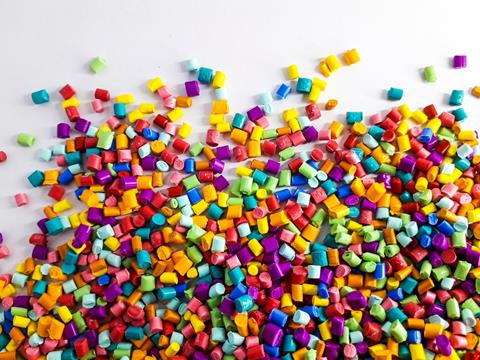
The use of post-consumer polypropylene in food packaging faces a major obstacle: proving the absence of harmful substances. In this article, Professor Edward Kosior and Paul Marshall of Nextek and NEXTLOOPP, share insights into a European-wide initiative that is aiming to overcome this challenge.
The Packaging and Packaging Waste Regulation (PPWR) has officially become binding.
Published in the Official Journal of the European Union on January 22, 2025, this regulation aims to reduce packaging waste, enhance recyclability, and promote a circular economy across the EU, coming into force on 11 February 2025 with general application from 12 August 2026
PPWR’s key highlights centre on reducing packaging waste by 15% per capita by 2040 compared with 2018 levels, mandatory recyclability of all packaging by 2030, prohibition of unnecessary over-packaging, with stricter design requirements and an overall stronger focus on reuse, recycling, and reducing single-use materials.
To achieve this, all plastic packaging must now be designed for optimised recyclability.
For the purpose of this article, our focus is on food-contact polypropylene (PP) packaging, both rigid and flexible, which makes up the largest fraction of the 74 million metric tons of PP produced globally and therefore plays a pivotal role in plastics’ circularity.
Being food-contact this PP packaging is rightly subject to stricter recycling and content requirements, which means balancing recycled content thresholds while ensuring the required food safety standards are also met.
Finding the best solutions to ensure what is produced can be effectively and simply recycled back into high-quality resins is critical to its circularity. Yet as it stands, even with ideal collection, sorting, and recycling rates (75% collection, 95% sorting, 85% recycling), recovery yields still only reach about 60%.
With our renewed focus on recovering materials at the end of one life-cycle, we must go beyond our old recycling boundaries and eliminate unintended build-up of package elements that might travel with the plastics during recycling.
Many packages are made with pigments for colouration and opacity and come with a printed label that is fixed to the package. All of these components can become a part of the composition of recycled plastic and need to be examined for compliance with the food contact regulations. Everything from inks, adhesives, binders, labels and pigments should be reduced and optimised for recycling to boost rather than hinder the circular economy, and recent research into these has revealed both opportunities and challenges in achieving high recycled content packaging targets.
Novel testing strategies for contact-sensitive recycled plastics packaging
EFSA’s tight threshold requirements to prove the absence of potential harmful substances can’t always be easily demonstrated with classical chemical analysis testing due to the very low levels of detection required for substances that might be of concern. This led to a Europe-wide initiative, SafeCycle, whose goal to tackle potential contamination in recycled plastics focuses on materials intended for food contact and cosmetics packaging.
SafeCycle, which is coordinated by partners such as Fraunhofer IVV, OFI, and FH Campus Wien, has been investigating testing methodologies to determine DNA-reactive substances that arose in some recycled plastics and not in others after extrusion and were considered toxicologically significant. These very low-level contaminants, which are challenging to detect and characterise with traditional analytical methods, have been found to create a response in a modified Ames test for mutagenicity
Following their initial findings, SafeCycle dug deeper to identify exactly what was causing the issue by developing a comprehensive testing protocol utilising high-resolution mass spectrometry, liquid chromatography, and bioassays.
These methodologies aim to identify and categorise contaminants, thereby helping to develop guidelines for safer recycling processes that prevent these substances from entering recycled materials.
Reaction of inks during recycling
Unprinted polyolefin film that is re-extruded did not cause a problem, however, where packaging was printed, or had labels, glues, binders and inks, the extrusion step triggered the release of decomposition products that were identified as mutagenic responsive triggers to the modified Ames Test.
Refining findings further it was established that the re-extrusion of nitrocellulose binders was one of the main contributors. As for inks, each colour comes with its own spectrum of challenges with organic yellow being one of the most concerning.
Whilst inks are strictly regulated and fit-for-purpose during their application, meaning nitrocellulose binders would never be used in packaging that requires high-heat exposure such as ovenable packaging, once in the recycling stream, with no control of the input, they will be heated to T >250 °C during extrusion. In these conditions, the inks will degrade, making the recycled material unsuitable for contact-sensitive applications due to safety concerns.
This highlights the need for the removal of nitrocellulose-based inks from packaging prior to recycling or to ensure the decomposition products are removed from the plastic as a part of the recycling process.
Re-shaping solutions to boost PP circularity
Tackling the big question of ensuring that recycled material derived from printed packaging can be decontaminated to an acceptable level for safe use in food-grade packaging, even after going through the extrusion process, requires deploying state-of-the-art technologies that enable us to overcome the current boundaries.
And we are making good progress in this direction. Whilst more work needs to be done to validate our findings, NEXTLOOPP’s high-performance decontamination process, which relies on extracting volatile and semi-volatile materials in the melt stage and the solid state and the PPristine food-grade resins, has passed the modified Ames test showing no mutagenic responses.
Furthermore, Nextek’s novel technology, COtooCLEAN uses supercritical CO2 process to extract contaminants from polyolefin films to very high rates.
One of NEXTLOOP’s participants, HydroDyn, the innovative cleaning technology company, has developed an advanced approach for removing labels, adhesives, inks and other contaminants from recycled plastics. This process centres on its innovative HydroCleaner and HydroSeparator technologies, which can eliminate up to 99.9% of extrinsic contaminants, including ink from labels.
Inks and coating specialists, Siegwerk have been running in-depth studies to investigate the de-inkability of direct-printed PP cups. Adhering to DIN SPEC 91496, the tests resulted in complete ink removal, with ΔE values ranging from 0.5-1.5, well below the acceptable limit of 3.
As Andrey Charkovskiy, senior business partner recycling and polymers at Siegwerk points out following these trials, by confirming the effective de-inking of PP direct-printed cups under hot caustic washing conditions - a method increasingly adopted in the recycling industry for producing consumer packaging recyclates - this project highlights the necessity for Design for Recycling Guidelines to adapt to newly established and effective industrial practices.
Design for Recycling must align with test findings
It has become strikingly clear that to address these more complex circular economy recycling issues we must continually reassess our guidelines for Design for Recycling, taking these findings into account and re-aligning with the latest recycling technologies that overcome these hurdles.
This starts with ensuring that all on-pack decorative material is totally removable, everything from adopting labelling systems that detach from the pack through to stable formulations for inks and binders must be proven to be suitable for the subsequent recycling operations at the early stages of packaging design.
Adhesives need to separate from the package and must remain with the label when being recycled. NEXTLOOPP participant Bostik has developed the next-generation range of wash-off label solutions for PP, HDPE and PET.
Another NEXTLOOPP participant, MCC Verstraete’s NextCycle IML™ technology addresses the IML issue with its NEXTCYCLE removable IML solution tailored for rigid polypropylene (PP) packaging. This system allows decorated packaging to be recycled with minimal interference. During recycling, the labels are designed to shrink and then separate from the PP containers in the hot washing phase, preserving the integrity of both materials
As the design requirements of food-grade polypropylene post-consumer packaging recalibrate to comply with EU food safety regulations, particularly Regulation 1616/2022 “recycled plastic materials and articles intended to come into contact with foods”, the packaging, adhesives, pigments, label and printing industry must shift their thinking and their products to a closed-loop system where plastics such as polypropylene can be reused without compromising safety or functionality.
Now that the PPWR has confirmed its targets with a focus on boosting high-quality ‘closed loop’ recycling and reducing the use of primary natural resources, the sector needs to urgently address the contamination hurdles and either redesign the packaging with suitable decoration concepts or use innovative technology to overcome them.
Thankfully NEXTLOOPP, COtooCLEAN and related projects are focussing on developing commercially viable solutions to achieve this.
If you liked this story, you might also enjoy:
Reuse vs. single use – which is better for the environment?
Sustainable Innovation Report 2025: Current trends and future priorities
What can the world learn from South Korea’s world-leading performance in plastics circularity?

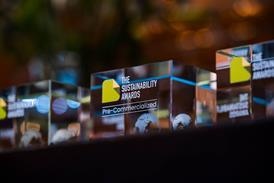
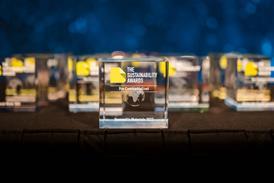
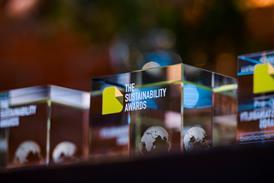
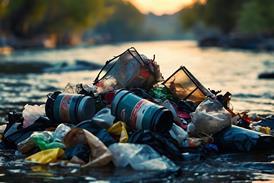
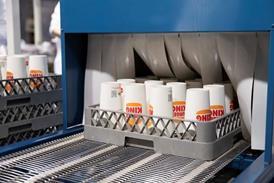











No comments yet